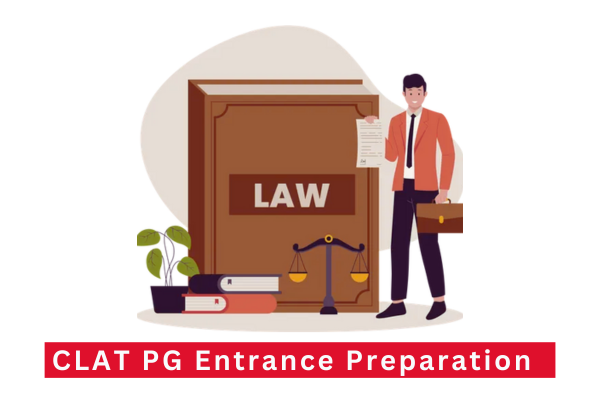
UGC NET Paper 1: Mastering Learner Characteristics for Teaching Success
Characteristics of Learners
1. Adolescent Learners
Social Development:
- Identity Formation: Adolescents search for a sense of self, experimenting with various roles and exploring their place in the world.
- Peer Influence: Friendships and peer groups become central to their lives, influencing decisions and behaviors.
- Increased Autonomy: They seek greater independence from their parents and families, desiring more control over their choices.
Emotional Development:
- Heightened Emotions: Experiences of intense emotions, sometimes leading to mood swings and impulsivity.
- Risk-taking: May engage in risky behaviors due to a developing sense of invulnerability and a focus on immediate rewards.
- Sensitivity to Social Cues: Increased awareness of and sensitivity to the opinions of others.
Cognitive Development:
- Abstract Thinking: Develop the ability to think beyond the concrete and consider hypothetical situations and ideologies.
- Metacognition: Capacity for thinking about their own thinking processes and learning strategies.
- Idealism and Critical Thinking: Question established norms and values, becoming more critical of authority.
2. Adult Learners
Social Development:
- Diverse Responsibilities: Often balance work, family, and other commitments alongside learning.
- Role Transitions: May experience life changes in relationships, careers, or health influencing their approach to learning.
- Stability and Life Experience: Possess a sense of self and accumulated experiences that they bring to the learning environment.
Emotional Development:
- *Self-Direction: Highly motivated and goal-oriented, often seeking learning for specific purposes.
- Time Sensitivity: May have limited time and seek efficient learning experiences.
- Relevance Oriented: Prefer learning that is directly applicable to their lives and current needs.
Cognitive Development:
- Practical Problem Solving: Focus on applying knowledge to real-world situations and solving complex problems.
- Drawing on Experience: Utilize their wealth of experience to connect new information with existing knowledge.
- Potential Decline: May experience a slight decline in fluid intelligence with age, but crystallized intelligence continues to grow.
3. Individual Differences and Learning Styles
Individual Differences:
- Intelligence: Variations in intellectual abilities across domains like verbal, spatial, or mathematical reasoning.
- Personality: Extroversion, introversion, openness, neuroticism, etc., influencing how learners interact and learn.
- Learning Preferences: Learners may be visual, auditory, kinesthetic, or have a combination of preferences.
- Background and Experience: Cultural background, socioeconomic status, and prior experiences shape how learners approach learning.
Learning Styles:
- Kolb's Experiential Learning: Learn through concrete experience, reflective observation, abstract conceptualization, and active experimentation.
- VARK Model Emphasizes preferences for visual, auditory, read/write, and kinesthetic modalities.
- Multiple Intelligences (Gardner): Proposes that individuals possess different strengths across linguistic, logical-mathematical, spatial, kinesthetic, musical, interpersonal, intrapersonal, and naturalistic intelligences.
4. Factors Influencing Learning
Internal Factors
- Motivation: High levels of intrinsic and extrinsic motivation drive learning and engagement.
- Self-Efficacy: Belief in one's capability to succeed influences persistence and effort.
- Prior Knowledge: Existing knowledge and skills provide a foundation for integrating new information.
- Learning Disabilities or Difficulties: Conditions like dyslexia, ADHD, and others can create specific learning challenges.
External Factors
- Learning Environment: A safe, supportive, and conducive environment fosters positive learning experiences.
- Instructional Methods: Diverse strategies and approaches cater to different learning styles and needs.
- Feedback and Assessment: Informative feedback and appropriate assessments promote ongoing learning and improvement.
- Social and Cultural Context: Influences values, beliefs, access to resources, and expectations surrounding learning.
Additional Considerations and Strategies
1. Technology Integration
- Technology can revolutionize learning experiences and cater to different learning styles.
- Tools like simulations, multimedia presentations, and online collaboration can enhance engagement and understanding.
- Educators should thoughtfully integrate technology, consider digital literacy levels, and promote critical media consumption.
2. Diverse Learning Environments
- Inclusive Classrooms: Foster environments where learners feel valued and respected regardless of background, abilities, or differences.
- Collaborative Learning: Group work, peer tutoring, and discussions promote social interaction and knowledge building.
- Experiential Learning: Hands-on activities, projects, and real-world applications deepen understanding and bridge the gap between theory and practice.
3. Strategies for Supporting Learners
- Differentiated Instruction: Tailor teaching approaches, assessments, and materials to meet the diverse needs of learners.
- Scaffolding: Provide temporary support and guidance to help learners reach new levels of understanding.
- Metacognitive Strategies: Teach learners how to monitor their thinking, set goals, and adapt their learning strategies.
- Growth Mindset Intervention: Cultivate the belief that intelligence and abilities can develop through effort.
- Addressing Barriers: Identify and address potential barriers (e.g., lack of resources, learning disabilities, social-emotional challenges) that can hinder learning.
Important Notes
- Critical Evaluation of Learning Styles: Research is mixed on the effectiveness of tailoring instruction solely to learning style preferences. It's helpful to offer variety and encourage metacognition in learners to find what works best for them.
- Holistic Understanding: The characteristics of learners are intertwined. Consider the interplay of social, emotional, cognitive, and environmental factors on learning.
- Self-awareness as an Educator: Educators' own biases, beliefs, and teaching styles influence the learning environment and student interactions.
Example Application Scenario
Imagine teaching a mixed-level college class on environmental science with diverse adolescent and adult learners. Consider the following:
- Adolescent Learners: Design engaging activities with opportunities for discussion and peer collaboration, addressing social needs. Connect concepts to relevant issues and offer opportunities for abstract and critical thinking tasks.
- Adult Learners: Relate content to real-world problems they face. Draw on their experiences in discussions. Allow for some flexibility in assignment deadlines to accommodate their commitments.
- All Learners: Provide multi-modal presentations (visuals, videos, text), offer differentiated options for assignments, use formative assessments and feedback to track progress.
Key Takeaways
- Understanding learner characteristics is essential for creating effective learning experiences.
- Adolescent and adult learners have distinct social, emotional, and cognitive differences.
- Individual differences and learning styles highlight the importance of variety and adaptability in teaching.
- A multitude of internal and external factors can influence the learning process.


.png)




.png)
